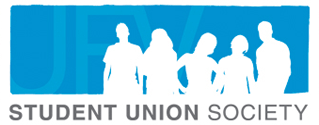by Joel Smart (Sports Editor)
The construction of the Student Union Building has come to a halt this week after three years in the planning, as funding support for the project has been withdrawn.
The Student Union Society issued a press release on October 1 detailing the situation. “After three years of planning and preparation, the Student Union Building (SUB) project, which until this week was planned to come to fruition in the Winter of 2011, has stalled. This comes as the University of the Fraser Valley, which was to be a key partner in the construction of the building, was made to rescind their financial contribution.”
Jay Mitchell, UFV SUS president, said that the stalling of the project had been highly unlikely: “Our current situation really is the compilation of many ‘worst-case scenarios’.”
According to the SUS release, board chair of the UFV Board of Governors Rod Thomson had sent a letter that explained the choice to rescind. “It cites their inability to accept a new and reduced offer by the expected purchaser of the Chilliwack North Campus (Yale Road) lands, the university’s contractual obligations to complete construction of the Canada Education Park Development (the SUB project had not yet reached a point of similar obligation) and the Provincial Government Treasury Department’s suspension of all provincial lending,” stated the release.
Mitchell said the reason why the project had gone ahead so far without having the funding in place was because without the details worked out, the project would never have had a chance. “Some may say the loan and financing for the project should have been secured as soon as the referendum had passed, but with the structure of government funding as it is, this notion is realistically not possible – especially not in our rough economic climate,” he said. “To suggest we get a loan for a project prior to establishing the scope of work or the estimated budget is inanely backwards, as no lender would even consider such a plan. Also, because UFV had plenty of cash reserve they could commit into the project, there was no forecasted need to look at this avenue.”
“To suggest that the government’s Treasury Board is to blame is quite accurate,” he said of the funding crisis. “When another SUS Director and I met with local MLAs, it seemed quite reasonable that this project would get the funding we were looking for. We discussed the project at length during that meeting, based on the plans and ideas contained in our business case, and there was no implication at that time that the project would be denied funding.” He said that when the Treasury denied funding, UFV had initially taken on the financial responsibility. Mitchell explained that it was only when they were unsuccessful in their attempt to sell the Chilliwack North campus, as well as their failure to receive government funding for a project at the Canada Education Park, that UFV was forced to rescind their pledge.
Thomson was quoted in the release, explaining that UFV would continue to support the project when a solution could be found. “We will allocate resources within the University to assist the Student Union Society with any initiative upon which we agree to move the project forward,” wrote Thomson. “In so doing we must balance the fiscal realities of our current business climate with our fervent wish to provide appropriate space for our students to increase their student life experience while attending UFV.”
Luis Guevara, SUS financial administrator, said in the release that there are some alternatives to consider. “We’re looking at a number of things, from purchasing existing buildings to P3 opportunities to other means of suitable financing that will bring our members the building they deserve, dedicated to enhancing their UFV experience.”
Mitchell was able to elaborate on these possibilities. “The example of purchasing existing buildings would mean that while shelving the current design project, we are still considering acquiring already complete facilities. The extent of this possibility is very limited, as the property would need to be of distinct closeness to campus, and be something we could use to realistically provide useful function to the student body,” he said. Regarding the public-private partnership (P3) option, Mitchell thought it seemed doubtful. “The potential for a public-private partnership can’t be ruled out in regard to our project,” he said. “While it seems quite unlikely that a public-private funding partnership can be found with substantial meaning or value (partners typically want to influence the building design itself, which we’re well beyond in a timeline sense), the possibility still exists for us to find some sort of partial funding for naming rights to the building.” Mitchell also provided one other possible solution that could be undertaken. “We are open to the possibility of a private-sector loan being extended to us to cover the costs of the project,” he said. “This option would likely increase the overall cost/repayment time of the project due to higher interest rates on these loans over government funding, but could still ensure we get the designed project complete in a somewhat reasonable timeline.”
Mitchell did have one other idea up his sleeve. “If I won a huge lottery in the next little while, I’d fund the project myself!”


